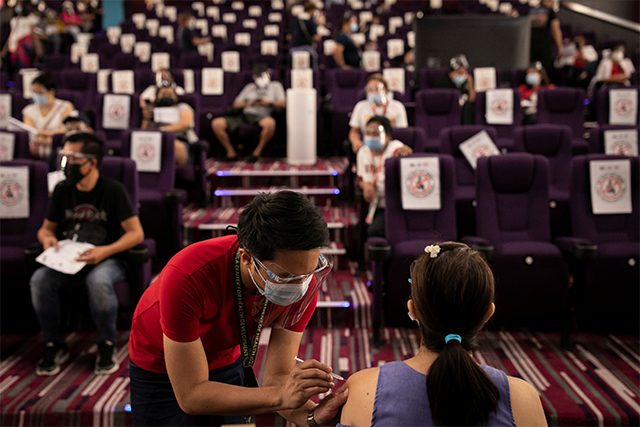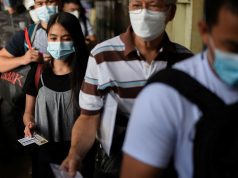
The Department of Health used a new term called “population protection” it is eyeing before the year ends, instead of the previous target “herd immunity.”
Some Filipinos questioned this move, saying this is just another band-aid solution for their perceived failures.
In a briefing on Wednesday, Health Undersecretary Myrna Cabotaje explained that population protection means reducing the number of deaths and hospitalized patients through vaccination.
This, however, is also similar to the objectives of achieving herd or community immunity in a country.
“So ang ating term ngayon ay really ‘population protection’. We prevent hospitalization. We prevent and minimize deaths by prioritizing. And the bigger the population that is vaccinated, we have population protection so hindi magkakahawaan,” Cabotaje said.
“Kung may magkahawaan man, this will be very mild. And hindi naman transmissible usually kapag nabakunahan ka na, hindi ka na makaka-transmit o kung maka-transmit ka man ng infection ay very mild ang symptoms,” she added.
The World Health Organization defines herd immunity as “the indirect protection from an infectious disease that happens when a population is immune either through vaccination or immunity developed through previous infection.”
The John Hopkins Bloomberg School of Public Health also provided context about this in an article.
“If 80% of a population is immune to a virus, four out of every five people who encounter someone with the disease won’t get sick (and won’t spread the disease any further). In this way, the spread of infectious diseases is kept under control,” it said.
Therefore, a substantial number of a country’s population should have been fully vaccinated to achieve herd immunity.
“The higher the level of immunity, the larger the benefit. This is why it is important to get as many people as possible vaccinated,” the organization said.
The confusing change of terms
In the same briefing, Cabotaje also explained that the “shift” in the government’s target in their vaccination program is due to the presence of COVID-19 variants in the country.
“We are shifting to the term ‘population protection’ through mass immunization kasi po iyong ating herd immunity, marami pong mga kaakibat na mga criteria: We are considering the variant; We are considering the regular definition of the herd immunity na magkakaroon ka ng protection, ng full protection na tuluy-tuloy,” she said.
Some Filipinos, however, were not convinced. They cited the National Task Force against COVID-19’s previous target of inoculating 70% of the population by November 2021.
When vaccine czar Carlito Galvez Jr. announced this, he mentioned the term “herd containment” that the government targets by September of this year.
“Population protection na kasi di daw kaya mameet ang standards ng herd immunity na kelangan 70 percent of the population,” one user said.
“Why do I feel like this is your way of getting away from your promised herd immunity by the end of the year?” another user said.
A Twitter account Philippines Vaccine Tracker shared a timeline of how the national government changed their goalposts in vaccination.
PH govt’s moving goalposts:
March — “Herd Immunity / Better Christmas”
70M by Dec 2021Mid May — “Herd Containment”
25M by Sep 2021
50-70M by Nov 2021Late May — “Population Protection”
50-60M in NCR Plus by Nov 2021
70M by end of 2021 or early 2022https://t.co/jGsiOQC7H5— Philippines Vaccine Tracker 💉 (@HerdImmunityPH) May 26, 2021
Others questioned the need to change terminologies again, citing the previous terms used like “expanded targeted testing” instead of “mass testing.”
“Bakit ba kelangan palitan lagi mga terms: Mass Testing ginawang Targeted Testing Lockdown ginawang ECQ/MECQ/GCQ/MGCQ Greater Metro Manila ginawang NCR Plus Ngayon naman Herd Immunity gagawing ‘Population Protection.’ Daming terms pero isa lang naman ibig sabihin: PALPAK,” one user said.
Palace previously announced the official term of the government’s testing program is “expanded targeted testing.”
READ: Expanded targeted testing vs mass testing: Is there a difference between the two?
However, the groups or individuals to be prioritized under this program are also similar to “mass testing” or the widespread testing of all suspected cases and aggressive contract tracing.









